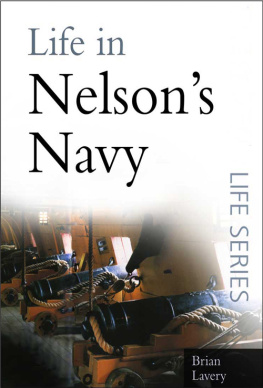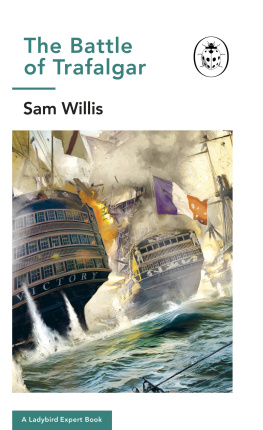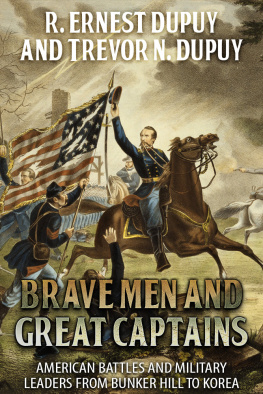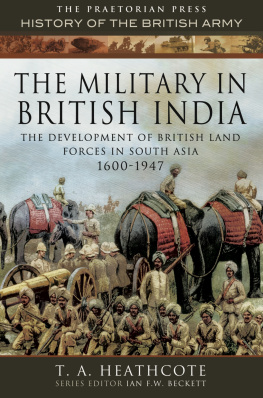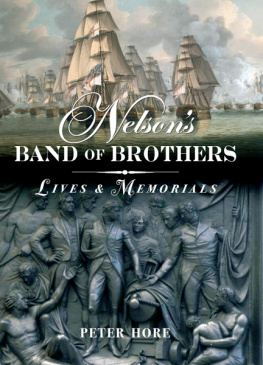
First published in Great Britain in 2005 by
Pen & Sword Maritime
an imprint of
Pen & Sword Books Ltd
47 Church Street
Barnsley
South Yorkshire
S70 2AS
Copyright T. A. Heathcote 2005
ISBN 1-84415-182-4
eISBN 9781844682256
The right of T. A. Heathcote to be identified as Author of this Work has been asserted by him in accordance with the Copyright, Designs and Patents Act 1988.
A CIP catalogue record for this book is available from the British Library
All rights reserved. No part of this book may be reproduced or transmitted in any form or by any means, electronic or mechanical including photocopying, recording or by any information storage and retrieval system, without permission from the Publisher in writing.
Typeset in 10/12pt Palatino by
Mac Style Ltd, Scarborough, N. Yorkshire
Printed and bound in England by CPI UK.
For a complete list of Pen & Sword titles
please contact
PEN & SWORD BOOKS LIMITED
47 Church Street, Barnsley, South Yorkshire,
S70 2AS, England
E-mail: enquiries@pen-and-sword.co.uk
Website: www.pen-and-sword.co.uk
After such a victory, it may appear unnecessary to enter into encomiums on the particular parts played by the several Commanders; the conclusion says more on the subject than I have words to express; the spirit which animated all was the same; when all exert themselves zealously in their countrys service, all deserve that their high merits should stand recorded; and never was high merit more conspicuous than in the battle I have described.
Dispatch to the Lords Commissioners of the Admiralty from Vice-Admiral Cuthbert Collingwood, C-in-C Mediterranean Fleet, in the frigate Euryalus , off Cape Trafalgar, 22 October 1805
In memory of Derek Stephen Baynham 19362000 Scholar, Soldier, Naval Administrator
C ONTENTS
1. A 1st-rate ship of the line, 104 guns, HMS Victory, Nelsons flagship at Trafalgar. (Lithograph after Arthur Burgess)
2. Vice Admiral Sir Thomas Masterman Hardy.
3. A 3rd-rate ship of the line, 74 guns. (Lithograph after W. F. Mitchell)
4. Vice Admiral Cuthbert, Lord Collingwood. Engraving with facsimile signature.
5. Admiral Sir Edward Codrington. Engraving with facsimile signature.
6. Captain Prignys Plan of Trafalgar 1805.
7. Plan of Trafalgar from the Naval Chronicle, Volume XIV, 1805.
8. A 5th-rate frigate, 42 guns. (Lithograph after W. F. Mitchell)
Preface
O ctober 2005 is the 200th anniversary of the Battle of Trafalgar, a victory that confirmed British supremacy over the Combined Fleets of Napoleon and his allies and left the oceans of the world clear for British shipping and British trade. At the time, most British people saw it as they had the defeat of the Spanish Armada in 1588, or as they would the Battle of Britain in 1940 a deliverance from the threat of invasion by a well-trained army with a record of recent victories. In fact, Napoleon had already despaired of gaining control of the Channel and abandoned his invasion plans eight weeks before Trafalgar. As the veteran Admiral St Vincent put it, it was not that the French could not come, but that they could not do so by sea. The significance of Trafalgar was not that it safeguarded British shores (the wooden wall of the Channel fleet and the choppy waters of the Channel tides did that), but rather that by the annihilation of the enemys main fleet, it guaranteed British maritime ascendancy across the world. For the next century, British ships were free to carry British products to every part of the globe and return with raw materials for British mills and food for the British population. British traders and bankers had already created a society wealthy enough to defend itself and to subsidize its allies. Nelsons triumph ensured that the expanding British Empire and its financial heart, the City of London, would flourish under the unchallenged protection of the Royal Navy for another 100 years.
Most of the works, published or republished in connection with this occasion, are about Nelson himself, on the battle and its preceding campaign, or on the general history of the Navy in the Georgian period. This book is an account of the lives of all the men who commanded at Trafalgar under Nelson. Often treated as extras in the biographies of their great commander, they are here collected together as a group in their own right. Some already have their own biographers. Others well deserve them, and many led lives that bear comparison, in terms of incident and adventure, with fictional counterparts such Aubrey, Bolitho, Hornblower or Ramage. The book is intended for anyone, whether academic or general reader, seafarer or landsman, who has an interest in the history of the Royal Navy and a liking for tales of ships and the sea. It is intended also as a tribute to all who fought at Trafalgar, including those of the French and Spanish Navies, whose modern successors, now British allies in NATO and the European Union, also commemorate the courage and chivalry shown by both sides.
Acknowledgements
I take this opportunity to acknowledge the assistance given in the preparation of this book by the staff of the Royal Military Academy Sandhurst Library, the National Maritime Museum, the City of Portsmouth Library, the Royal Naval Museum and the National Portrait Gallery, and by members of the 1805 Club and the Huguenot Society. I am especially grateful to Michael Orr and John Vignoles for their advice on historical sources; to Dr Debbie Goodwin and Neil Hearne for help with IT problems; to Surgeon Commander Sandy Cochrane, late RNR, and Surgeon Lieutenant Commander Dennis Freshwater, Royal Navy, for their naval medical opinions, and, as always, to my wife who acted as research assistant and who proofread the manuscript.
T. A. Heathcote
Camberley, February 2005
Note on the Classification of Sailing Warships
D uring most of the period covered by this book, the British fleet was made up of rated ships (corresponding to the modern term major surface combatants) and unrated vessels (the modern minor surface combatants). The major combatants were divided into six rates, according to the official number of their guns, though in practice many carried additional pieces such as carronades (heavy ordnance for close combat) which were not shown in the rate. The official number was given after the ships name, together with its rate. 1st-rates had 100 or more guns. 2ndrates carried either ninety or ninety-eight. 1st and 2nd rates, the fleets most powerful assets, were three-deckers, platforms for three tiers of guns that not merely outnumbered those of the smaller two-deckers that were the standard work-horses of contemporary navies, but were able to sweep the upper decks of such opponents. 3rd-rates carried between sixty-four and eighty-four guns. 4th-rates, with between fifty and sixty guns, were too weak to stand in the line of battle and were mostly used either as convoy escorts or on other detached duties. There were none in the fleet at Trafalgar. Frigates, technically ships that carried their main armament on a single deck, made up the 5th- and 6th-rates, with between thirty and forty-four or twenty and twenty-eight guns respectively. There were four frigates at Trafalgar, all of them 5th-rates. Rated ships were commanded by post captains, officers who were captains by rank as well as by title. The two unrated vessels at Trafalgar were a schooner and a cutter. Too small to merit the appointment of commander, which went with more important minor combatants such as sloops and brigs, each was under the command of a lieutenant.











